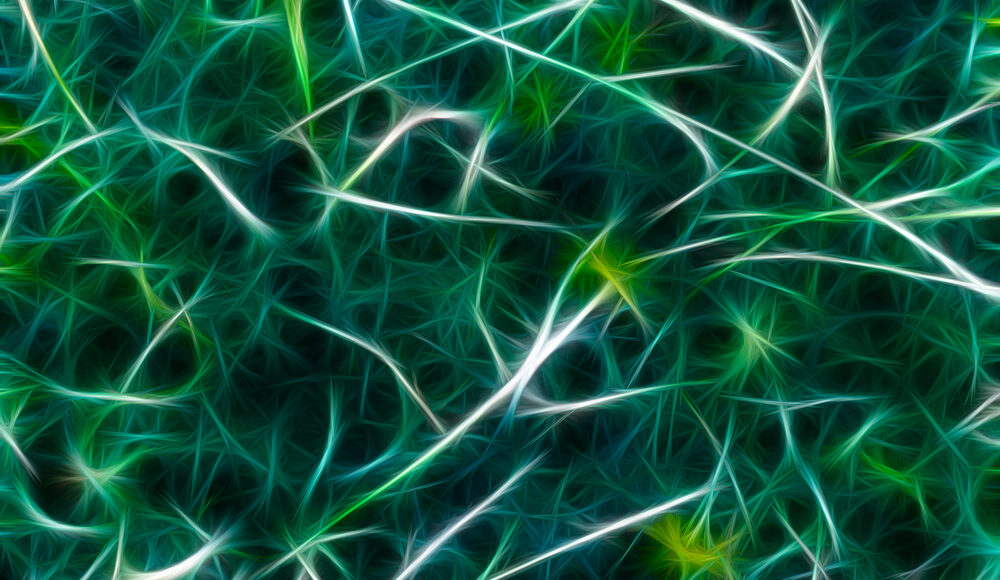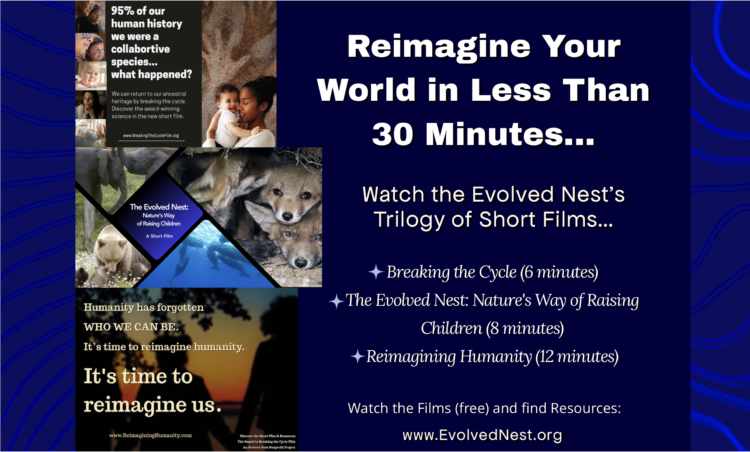Understanding Deep Nestedness for All
Why is humanity destroying its wellbeing and its habitat, Earth?
Note: Excerpted from Darcia Narvaez (2024). “Returning to Evolved Nestedness, Wellbeing, and Mature Human Nature, an Ecological Imperative.” In Review of General Psychology, 28 (1). Read the entire article here.
Abstract
Why is humanity destroying its wellbeing and its habitat, Earth? The suggestion here is that the dominant culture has unnested itself from humanity’s millions-year-old adaptive heritages, impairing evolved capacities and human potential in a feedback loop of greater disconnection and destruction. Humanity’s heritage is to be nested horizontally, respectful of deep history and future generations, nested developmentally with evolved ways of raising children to foster thriving, and nested vertically, consciously participating in Earth-cosmos dynamism. Nestedness fosters capacities that are often missing in westernized peoples: ecological relational consciousness and knowhow, which were central to human adaptation. The dominant culture undermines their development. Mainstream western scholarship has accepted the slippage in baselines, collaborated with industrialized-capitalism culture and its intentional divorce from Nature’s ways, and is now caught and caged in the limitations of its models and metaphors. Enmeshed in the dominant culture, modernist psychology largely ignores species-normal child raising, human nature and capacities found all over the world among nomadic foraging societies and other traditional societies. In order to reverse the dominant culture’s destruction of planetary integrity, biological and cultural diversity, psychology must transform itself to help reestablish evolved practices and support deep nestedness, thereby helping restore human and Earth wellbeing.
Why is humanity destroying its wellbeing and its habitat, Earth?
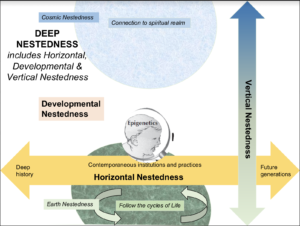 The dominant culture has unnested itself from humanity’s millions-year-old adaptive heritages, impairing evolved capacities and human potential in a feedback loop of greater disconnection and destruction across generations. Illbeing and illth are rampant and growing.
The dominant culture has unnested itself from humanity’s millions-year-old adaptive heritages, impairing evolved capacities and human potential in a feedback loop of greater disconnection and destruction across generations. Illbeing and illth are rampant and growing.
What is humanity’s heritage?
Humanity’s heritage is to be deeply nested.
What does “deep nestedness” mean?
There are three identifiable forms of nestedness that helped our deep ancestors thrive.
Horizontal nestedness means being attentive to traditions developed across generations, honoring ancestors, and living responsibility with future generations in mind.
Developmental nestedness means providing the evolved nest to children and to all throughout the lifespan.
Vertical nestedness refers to the present moment of interbeing here and now, wherever we are, of conscientious entanglement with Earth and its entities. We act respectfully with all our relations with courteous manner and protocol. We also marinate in a sense of cosmic oneness with the universe.
What does Deep Nestedness do?
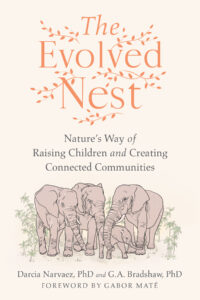 Deep nestedness fosters species-normal capacities, often missing in modern peoples. Here are two capacities.
Deep nestedness fosters species-normal capacities, often missing in modern peoples. Here are two capacities.
Ecological relational consciousness refers to the sense of existing in a web of living, dynamic relations with multiple entities, from humans to trees, from rivers to bees—the list is endless—and in multiple realms, not only the visible manifested realm, but the unmanifested—the spiritual, the ancestral, and the future (e.g., Deloria, 1999; Ingold, 2011; Martin, 1999). Like a spider on its web, each person’s actions (including thoughts and feelings) reverberate across the web’s strands, affecting the wellbeing of all relations. To be enwebbed with countless relationships brings a sense of ongoing moral responsibility to live rightly and respectfully. Maintaining respectful connections becomes a deep desire, a deep value, resulting in a communal ethical orientation (Narvaez, 2014).
But to act on these values requires more than consciousness and desire. It requires knowhow.
Ecological relational knowhow is the second cultivated result of deep nestedness, involving mostly bottom-up, intuitive, skilled ways of being with others, human and nonhuman. Behavior in real time constitutes holistic cognition, know-how instead of a know-what (Varela, 1999), a contextually situated, embodied enactment of practical knowledge (Engel et al., 2013).
Children co-construct knowhow from engaging the world via movement and exploration, picking up ways to behave from the invariants in the world like gravity, sun, and moon cycles (Gibson, 1979) and from the ever-changing relational interactions with others through shared play.
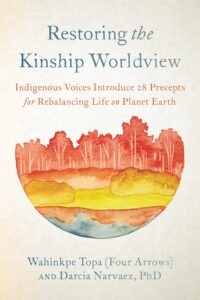 Children build receptive intelligence from immersion in natural wild spaces. They learn how to co-participate in the world as it presents itself. Even full-term newborns demonstrate a readiness-for-action with others (Trevarthen, 2005).
Children build receptive intelligence from immersion in natural wild spaces. They learn how to co-participate in the world as it presents itself. Even full-term newborns demonstrate a readiness-for-action with others (Trevarthen, 2005).
Developmental nestedness fosters full capacities for relational attunement; layer upon layer of micro-skills form across development, fostering a bottom-up ‘neuroeducation’ for compassionate moral functioning (Narvaez, 2012).
References
Deloria, V. (1999). Spirit & reason. Fulcrum.
Engel, A. K., Maye, A., Kurthen, M., & Konig, P. (2013). Where’s the action? The pragmatic turn in cognitive science. Trends in Cognitive Sciences, 17, 202-209. https://doi.org/10.1016/j.tics.2013.03.006
Gibson, J. (1979). The ecological approach to perception. Erlbaum.
Ingold, T. (2011). The perception of the environment: Essay on livelihood, dwelling and skill. Routledge.
Martin, C.L. (1999). The way of the human being. Yale University Press.
Narvaez, D. (2012). Moral neuroeducation from early life through the lifespan. Neuroethics, 5(2), 145-157. https://10.1007/s12152-011-9117-5
Narvaez, D. (2014). Neurobiology and the development of human morality: Evolution, culture and wisdom. W.W. Norton.
Narvaez, D. (2024). Returning to Evolved Nestedness, Wellbeing, and Mature Human Nature, an Ecological Imperative. Review of General Psychology, 28(2), xx-xx.
Trevarthen, C. (2005). Stepping away from the mirror: Pride and shame in adventures of companionship: Reflections on the nature and emotional needs of infant intersubjectivity. In C.S. Carter, L. Ahnert, K. E. Grossman, S. B. Hrdy, M. E. Lamb, S. W. Porges, and N. Sachder (eds.), Attachment and bonding: A new synthesis (pp. 55-84). Dahlem Workshop Report 92. The MIT Press.
Varela, F. (1999). Ethical know-how: Action, wisdom, and cognition. Stanford University Press.


